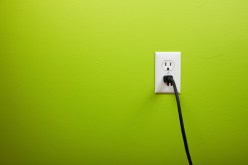Understanding Alopecia: Common Causes and Hair Loss Triggers
Alopecia, a condition characterized by hair loss, can be distressing for those who experience it. While there are different types of alopecia, each with its own causes and triggers, understanding the common factors behind this condition can help individuals better manage their hair loss. In this article, we will explore the common causes and hair loss triggers of alopecia.
Genetics and Hormonal Imbalances
One of the primary causes of alopecia is genetics. Individuals with a family history of alopecia are more likely to develop the condition themselves. This genetic predisposition can be passed down through generations, making some individuals more susceptible to hair loss.
Hormonal imbalances also play a significant role in alopecia. Conditions such as polycystic ovary syndrome (PCOS) or thyroid disorders can disrupt the normal hormonal balance in the body, leading to hair loss. These hormonal fluctuations affect the growth cycle of hair follicles, resulting in thinning or complete loss of hair.
Autoimmune Disorders
Another common cause of alopecia is autoimmune disorders. Conditions like alopecia areata occur when the immune system mistakenly attacks the hair follicles, causing them to shrink and eventually stop producing new hairs. This autoimmune response leads to patchy hair loss on the scalp or other areas of the body.
Autoimmune disorders often have underlying triggers such as stress or viral infections that contribute to their development. Identifying these triggers and managing them effectively can help reduce the severity and frequency of hair loss episodes associated with autoimmune-related alopecia.
Environmental Factors
Several environmental factors can trigger or worsen alopecia-related hair loss. Exposure to certain chemicals or toxins found in household products, pollution, or workplace environments may lead to damage to the scalp and hair follicles over time.
Additionally, excessive heat styling tools like flat irons or hair dryers can weaken the hair shaft, making it more prone to breakage and hair loss. It is important to protect the hair from excessive heat and use products that nourish and strengthen the hair follicles.
Emotional and Physical Stress
Stress, both emotional and physical, can have a significant impact on hair health. High levels of stress can disrupt the normal growth cycle of hair follicles, leading to excessive shedding or thinning. Emotional stressors such as traumatic events or chronic anxiety can trigger alopecia areata or worsen existing cases.
Physical stressors like major surgeries, illnesses, or nutritional deficiencies can also contribute to temporary or permanent hair loss. Proper self-care practices such as regular exercise, stress management techniques, and a balanced diet can help minimize the effects of these stressors on hair health.
In conclusion, understanding the common causes and triggers of alopecia is crucial for individuals experiencing hair loss. By acknowledging genetic factors, hormonal imbalances, autoimmune disorders, environmental influences, and the impact of stress on their condition, individuals can take proactive steps towards managing their alopecia effectively. Seeking medical advice from dermatologists or trichologists specialized in treating alopecia is recommended for personalized treatment plans tailored to individual needs.
This text was generated using a large language model, and select text has been reviewed and moderated for purposes such as readability.





